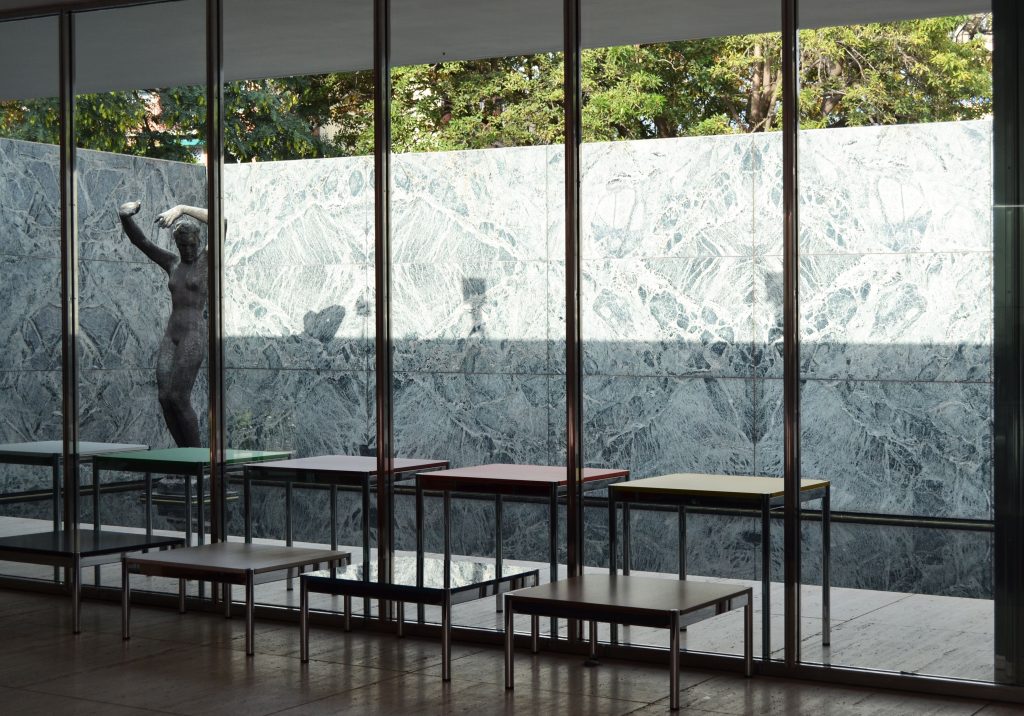In the field of architecture, stone is the main material found in archetypal images. Since ancient times, the home – seen as a protective, warm place in which to seek refuge – has been delimited by stone structures: at first it was left unplastered also in the interiors, then it was covered by a layer of lime mortar and, later, it was rediscovered and used as a decorative element. There is something about this material that is so consistent through history, yet so variable, that encourages us to find a way to reuse it.

Among the most important examples, in the Barcelona Pavilion, Mies Van der Rohe enhances stone and brings back its three-dimensional look: onyx, travertine and green marble become building elements, rather than decorative elements, and define a new living space, a renewed archetype of modern living, where nothing is needed except a few chairs, with majestic large slabs in the background.
Modern décor trends emphasise craftsmanship: after a brief period in which artificial resins predominated, the hypnotic textures and natural colours of stone once again serve as the backdrop of everyday life. Large slabs, which are the subject of continuous and increasingly innovative research work, also eliminate the size limitations which, in the past, penalised this extraordinary material. Joints, which for a long time were considered the weak point of stone floors and walls, are now an integral part of the overall look of the slab or embellished with metal finishes, such as brass and copper.
Combined with the clear-cut design of a sofa, neutral shades and a few other key furnishings, large stone slabs give living areas a primordial and majestic charm which, at the end of the day, contributes to the feeling of being “home at last”.
Consuelo Malta
